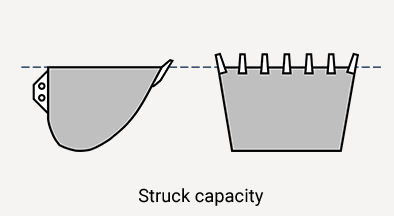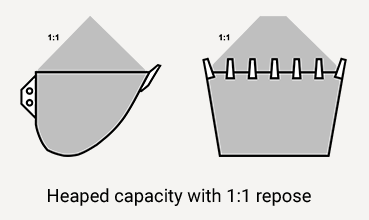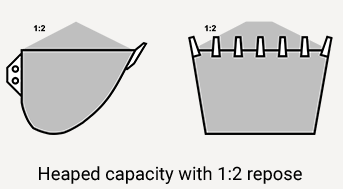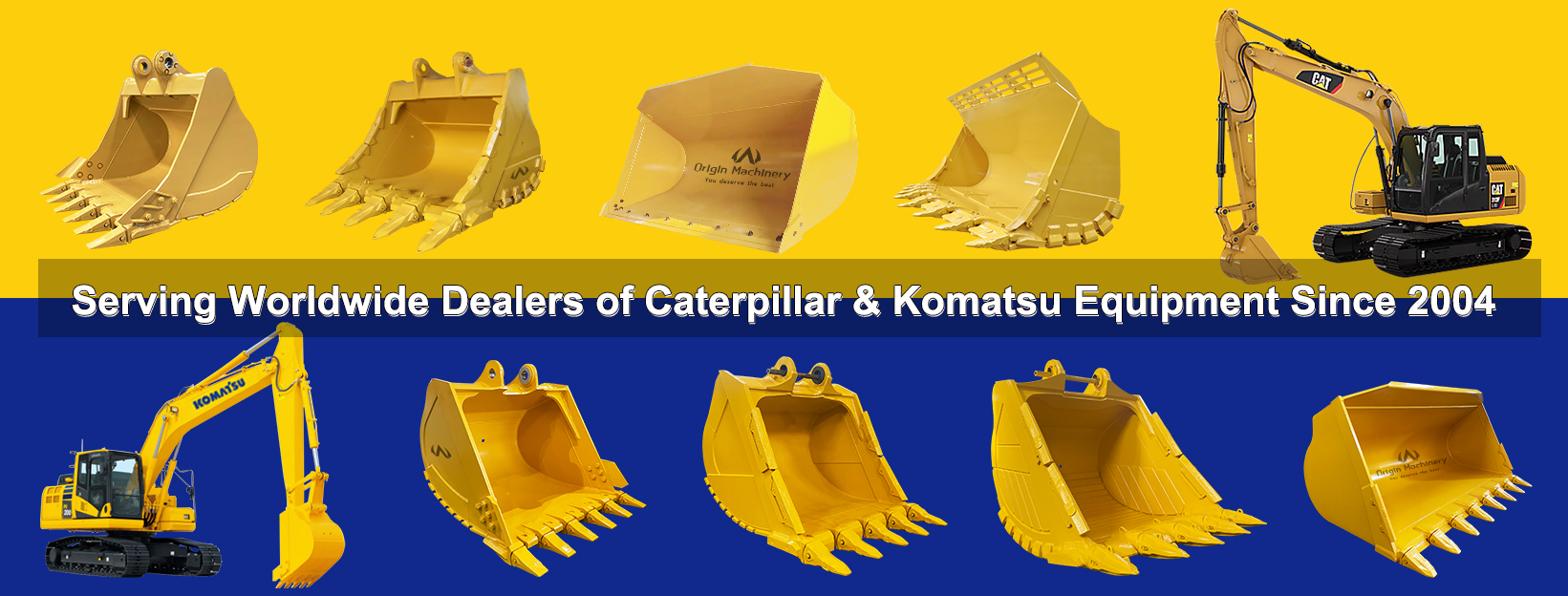As you work in construction or engineering industry, you might view bucket as a simple tool. However, when it comes to actual construction and excavation work, the precise measurement of a bucket's capacity can be the difference between a job well done and a costly mistake.
Whether you're operating an excavator, backhoe, or wheel loader, having a deep understanding of bucket capacities can help you make the most of your buckets and optimize work efficiency. In this article, we will dive into the topic of bucket capacity.
Obviously from the picture above, struck capacity refers to the volume of a bucket after it has been struck on the strike plane, which runs through the top back edge and cutting edge.
Conversely, heaped capacity is the sum of struck capacity and the volume of excess material on the bucket. There are two commonly used definitions of heaped capacity which vary depending on the machinery. Excavator and backhoe buckets use a 1:1 slope angle, whereas loader buckets use 1:2 (according to standards set by ISO, PCSA, SAE, and CECE).
Here we have a key factor - fill factor. Fill Factor is the percentage of a bucket's available heaped capacity that is actually used. For example, a fill factor of 80% means that the bucket is only using 80% of its full capacity to hold material, 20% of the rated volume is not being used.
While most excavator buckets have a fill factor of 100%, there are exceptions. The design of your bucket, including penetration, breakout force, and profile, as well as ground engaging tools, play a role in determining the bucket's fill factor. Thus, it’s important to purchase a well-designed bucket using high quality ground engaging tools from reliable sources like Origin Machinery, who has been manufacturing excavator buckets for almost 20 years and serving both excavator manufacturers and distributors in the OEM market.
Besides that, it’s vital to understand that the characteristics of the materials being moved also affect the fill factor. Sticky or moist materials, like loam, are easier to heap than dry or poorly blasted rock.
Post time: Nov-28-2023




